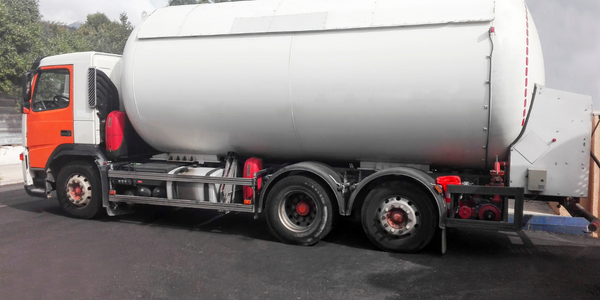Leading Eurasian Raw Materials, Building Materials and Ceramic Tile Producer Relies on Advanced Cloud-based IT Security to Protect Against Ransomware

公司规模
Large Corporate
地区
- Europe
国家
- Austria
产品
- CrowdStrike Falcon® platform
- Falcon OverWatch™
- Falcon Prevent™
- Falcon Insight™
- Essential Support
技术栈
- NextGen AV
- Endpoint Detection and Response (EDR)
- Managed Threat Hunting
实施规模
- Enterprise-wide Deployment
影响指标
- Productivity Improvements
- Customer Satisfaction
- Digital Expertise
技术
- 网络安全和隐私 - 应用安全
- 网络安全和隐私 - 云安全
- 网络安全和隐私 - 端点安全
适用功能
- 商业运营
用例
- 入侵检测系统
服务
- 网络安全服务
- 系统集成
关于客户
Lasselsberger Group is a family-owned Eurasian producer of raw materials, building materials, and ceramic tiles. The company is structured into three divisions: Ceramics, Minerals, and Building Materials, with production sites located in Central and Eastern Europe. Lasselsberger supplies not only local home markets but also international markets, particularly in Western Europe. The company has a strong market presence in various industries, including fiberglass, paper, and refractory, which helps it remain independent of fluctuations in the construction and building materials sectors. With a focus on market leadership and long-term secured raw material reserves, Lasselsberger has achieved successful growth over the years.
挑战
Lasselsberger Group faced significant challenges in IT security, particularly in protecting against modern ransomware attacks. The company was transitioning from a no-cloud strategy to a cloud-first approach, which necessitated a robust cloud security solution. Their existing signature-based antivirus product was outdated, leading to blind spots and a high number of false positives. The administrative burden of managing the old security solution was also considerable, requiring at least one day per week. Lasselsberger needed a modern security solution that could provide comprehensive protection and reduce administrative efforts.
解决方案
To address its IT security challenges, Lasselsberger Group implemented the CrowdStrike Falcon® platform, which includes Falcon OverWatch™ managed threat hunting, Falcon Prevent™ next-generation antivirus, and Falcon Insight™ endpoint detection and response (EDR). This comprehensive solution provided Lasselsberger with reliable protection against modern threats such as ransomware, while significantly reducing administrative efforts. The transition from the old security product to CrowdStrike was smooth, with both products running in parallel initially. The lean agent of CrowdStrike was a key factor in the decision, as it runs on all systems without disrupting production. The number of antivirus exceptions was also greatly reduced, from hundreds to just five to ten. Lasselsberger also leveraged the expertise of CrowdStrike's OverWatch team, which provides around-the-clock threat hunting support, ensuring comprehensive protection against modern threats.
运营影响
数量效益

Case Study missing?
Start adding your own!
Register with your work email and create a new case study profile for your business.
相关案例.

Case Study
Protecting a Stadium from Hazardous Materials Using IoT2cell's Mobility Platform
There was a need for higher security at the AT&T Stadium during the NFL draft. There was a need to ensure that nuclear radiation material was not smuggled inside the stadium. Hazmat materials could often be missed in a standard checkpoint when gaining entry into a stadium.

Case Study
Visual Management on Gas Tankers
Gas tankers are massive ships with a limited crew, making them extremely difficult to monitor. Video surveillance systems, which use a large number of widely distributed devices, and fire prevention systems are both crucial elements of a gas tanker monitoring system.The system used for this application is a legacy analog CCTV surveillance system that is completely independent from the main monitor and control SCADA system. With this system, the administrator responds to an event by first using the SCADA system to locate the event, and then accesses the appropriate surveillance camera from the CCTV system to view the location. The goal is to upgrade the system so that only one step is required. This is done by integrating the CCTV surveillance system into the SCADA system, in which case the surveillance system becomes a SCADA sub-system, making centralized control and monitoring possible.System Requirements- Upgrade to an IP video surveillance system for integration with the existing SCADA system- Live video display (through the SCADA system)- Enable events in the SCADA system to automatically trigger live video display- All the devices need to be of rugged design and have an anti-explosion defense

Case Study
Leveraging Graph Technology for Enhanced Cybersecurity: A Case Study on MITRE's CyGraph
MITRE, a federally-funded, not-for-profit company that manages seven national research and development laboratories in the United States, was grappling with the challenge of managing an influx of cybersecurity data. The constant changes in network environments were impacting the security posture of U.S. government agencies. Intrusion alerts, anti-virus warnings, and seemingly benign events like logins, service connections, and file share access were all potentially associated with adversary activity. The cybersecurity researchers at MITRE needed to go beyond rudimentary assessments of security posture and attack response. This required merging isolated data into higher-level knowledge of network-wide attack vulnerabilities and mission readiness. The challenge was not the lack of information, but the ability to assemble disparate pieces of information into an overall analytic picture for situational awareness, optimal courses of action, and maintaining mission readiness. The team also struggled with fully comprehending a given security environment and mapping all known vulnerabilities.

Case Study
EMC's Transition to SMS for Real-Time IT Alerts
EMC, a global leader in cloud computing, data storage, and data virtualization, was struggling with an inefficient and slow method of alerting its 68,000 employees about IT system updates. The traditional method involved drafting an email, proofing it, getting approval from several stakeholders, and finally sending it. This process was not only labor-intensive but also unreliable as it depended on the user's email being unaffected and the user actually opening and reading the email. After sending 1.2 million alert emails in a single month, EMC decided to find a more efficient and immediate way to alert employees. The challenge was to find a solution that was not only faster and less labor-intensive but also globally available and scalable to EMC's needs.

Case Study
Mitigating Cybersecurity Risks in Manufacturing: A Case Study of Jacobs Douwe Egberts
Jacobs Douwe Egberts (JDE), a global coffee and tea company, faced a significant challenge in the wake of a malware incident in 2017 that caused a computer outage across Mondelez’s global operations, resulting in losses of €100M. This incident served as a wake-up call for JDE to implement a robust cybersecurity program to protect its operational technology (OT), including the industrial control system (ICS) environment across its factories worldwide. The advent of Industry 4.0 has led to increased interconnectivity in manufacturing environments, making them more vulnerable to cyberattacks. Traditional IT security measures were no longer sufficient to protect JDE's manufacturing operations. The company needed a comprehensive overview of all cybersecurity risks and vulnerabilities across its factories, including all operational technology computing systems used to manage the entire industrial operation.

Case Study
Modernizing the Angolan Government Agency Voter ID Program with IoT
The Angolan government agency was seeking to upgrade its voter ID system ahead of the elections in Q3 2017. The aim was to increase the number of citizens eligible to vote by issuing voter IDs in a short time frame. The existing voter ID printing system needed to be replaced with a solution that reduced costs significantly by providing mobility and streamlining operational processes. The key selection criteria included a faster throughput secure issuance printer solution, a de-centralized secure issuance solution to increase the number of citizens enrolled, a Wi-Fi based secure issuance printing solution for increased convenience, improved reliability of the printing solution, a lightweight, easy-to-use portable solution for collecting citizens’ data and issuing voter IDs for citizens residing in remote areas, and high levels of security to combat fraud and minimize the number of counterfeit voter IDs.






